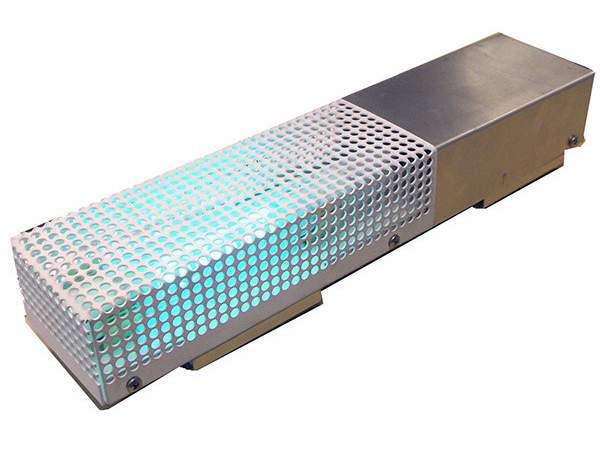
Air cleaners, HVAC filters, air purifiers — they can help reduce airborne contaminants including viruses in taprooms, restaurants and brewing facilities — but as the CDC is quick to note “air cleaning or filtration is not enough to protect people from COVID-19. When used along with other best practices recommended by CDC and other public health agencies, including social distancing and mask wearing, filtration can be part of a plan to reduce the potential for airborne transmission of COVID-19 indoors.”
That doesn’t mean air hygiene is not worth your time. Air cleaning can help reduce airborne contaminants, including particles containing viruses, if it can remove small airborne particles in the size range of 0.1-1 um. When it’s time to consider the proper particle capture efficiency of an air filter, it’s critical to understand the size of the particle creating the risk. Plus, air filtration adds to the overall comfort of guests. According to EPA studies of human exposure to air pollutants, indoor levels of pollutants can be two to five times higher than outdoor levels (even 100 times higher). Consider in any brewery, CO2 might accumulate in confined areas like fermentation tanks or walk-in coolers. On the customer side, brewery customers with asthma, allergies or chemical sensitivities like respiratory diseases, suppressed immune systems (think radiation, chemotherapy or an autoimmune disease) and even folks with contact lenses could benefit from filtered indoor air.
Here’s an example: RGF Environmental Group Inc., an environmental design and manufacturing company, just announced the full installation of its active air treatment solution in 180 Shake Shack restaurants across the United States. Let us not forgot that Brooklyn Brewery makes Shackmeister Ale for Shake Shack locations — a pale ale with a slightly sweet malt base and a big burst of hops — a welcome companion to griddled burgers, crispy fries and flat-top hot dogs.
Shake Shack is investing in the PHI Package Unit by RGF, which is designed to eliminate sick building syndrome risks by reducing odors, air pollutants, VOCs (chemical odors), smoke, mold bacteria and viruses. This product is designed specifically for package systems and utilizes adjustable magnetic feet to attach without fasteners to the blower unit itself making installation as trouble free as possible. The 24V model connects directly into the control box of the HVAC unit and is available in 5-, 9- and 14-in. cells which will handle package products from 1.5 to 20 tons. According to the press release:
National TAB, a leader in the test and balance and indoor air quality industries, installed RGF’s proprietary products with PHI-CELL and REME technology, proven to inactivate over 99% of the SARS-CoV-2 virus on surfaces and the aerosolized form of the virus. The installation of RGF air purification products will also help mitigate risk around norovirus, a common health concern for restaurants.
“Shake Shack has always prioritized the health and safety of our guests. Over the past year, we put heightened focus on the indoor air quality within each of our restaurants,” notes Andrew McCaughan, Chief Development Officer at Shake Shack. “RGF’s active air treatment solution, combined with increased ventilation and HVAC filtration, provided us an amazing solution to ensure we are providing a high-quality and safe experience for our team and guests.”
How does it work? Well, first off there are a lot of varying technologies that can purify air. According to this great article:
Filtration is the most common and typically the most effective method for HVAC systems (Exhibit 1). Other technologies, including irradiation and thermal sterilization, inactivate biological particles in the air without removing them. HVAC systems can also incorporate ionic purifiers, ozone generators, and other devices for cleaning air.
The PHI Package Unit by RGF uses Photohydroionization technology (irradiation), an advanced Indoor Air Quality (IAQ) technology developed by RGF Environmental Group to minimize and neutralize indoor air pollutants. Technically…
PHI utilizes a broad-spectrum, high intensity UV light targeted on a hydrated quad-metallic catalyst. The UV light in conjunction with the catalyst promotes the conversion of naturally occurring water vapor into airborne molecules of hydrogen peroxide (H2O2). These airborne H2O2 molecules revert to oxygen and hydrogen once they have come in contact with a pollutant.
This is just one of many products on the market right now for air filtration, so it’s important to do your research and consult a qualified HVAC specialist. Just remember: It’s imperative to take a comprehensive approach with air filtration at a brewery — like just by increasing outdoor air ventilation in order to reduce the percentage of air recirculated indoors. Consider upgrading a brewery’s HVAC hardware overall, replacing fixed-speed fan motors with variable-speed ones, introducing sophisticated airflow-control systems or installing a high performance air purification system. We highly suggest you read this article right over here: “Can HVAC systems help prevent transmission of COVID-19?” And we’ll keep you updated on new products.





Leave a Reply
You must be logged in to post a comment.